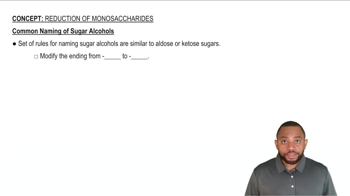Identify the monosaccharide that fits each of the following descriptions:
a. is also called blood sugar
 Verified step by step guidance
Verified step by step guidance Verified video answer for a similar problem:
Verified video answer for a similar problem:



 1:48m
1:48mMaster Intro to Carbohydrates Concept 1 with a bite sized video explanation from Jules
Start learning